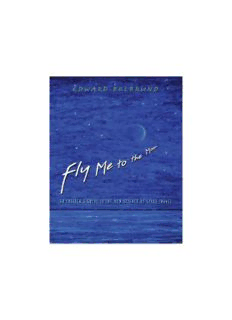
Fly Me to the Moon: An Insider's Guide to the New Science of Space Travel PDF
Preview Fly Me to the Moon: An Insider's Guide to the New Science of Space Travel
e Fly Me to the Moon Fly Me to the Moon AN INSIDER’S GUIDE TO THE NEW SCIENCE OF SPACE TRAVEL e Edward Belbruno PRINCETON UNIVERSITY PRESS PRINCETON AND OXFORD Copyright © 2007 by Princeton University Published by Princeton University Press, 41 William Street, Princeton New Jersey In the United Kingdom: Princeton University Press, 3 Market Place, Woodstock, Oxfordshire OX20 1SY All Rights Reserved Library of Congress Cataloging-in-Publication Data Belbruno, Edward, 1951– Fly me to the moon: an insider’s guide to the new science of space travel / Edward Belbruno p. cm Includes bibliographical references and index. ISBN-13: 978-0-691-12822-1 (cl : alk. paper) ISBN-10: 0-691-12822-7 (cl : alk. paper) 1. Gravity assist (Astrodynamics)—Popular works. 2. Celestial mechanics—Popular works. 3. Chaotic behavior in systems—Popular works. 4. Many-body problem—Popular works. 5. Outer space— Exploration—Popular works. I. Title. TL1075.B45 2006 629.4'111—dc22 2006043749 British Library Cataloging-in-Publication Data is available Printed on acid-free paper.∞ www.pupress.princeton.edu Printed in the United States of America 10 9 8 7 6 5 4 3 2 1 e This book is dedicated to the exploration of the Universe and to everyone who has helped me in my journey. Contents . . . . . . . . . . . . . . . . . Foreword by Neil deGrasse Tyson ix Preface xiii Acknowledgments xvii Chapter 1 A Moment of Discovery 1 Chapter 2 An Uncertain Start 5 Chapter 3 Conventional Way to the Moon 9 A Fuel Hog 14 Chapter 4 A Question 17 Chapter 5 Chaos and Surfing the Gravitational Field 29 What Is Chaos? 31 Chapter 6 Using Art to Find Chaotic Regions 37 An Oil Painting Unveiling Dynamical Processes 37 Chapter 7 WSB—A Chaotic No-Man’s-Land 41 Chapter 8 Getting to the WSB—Low Energy Transfers 49 Chapter 9 Rescue of a Lunar Mission 55 Skepticism, Politics, and a Bittersweet Success 63 Chapter 10 Significance of Hiten 69 Chapter 11 Salvage of HGS-1,and a Christmas Present 77 Chapter 12 Other Space Missions and Low Energy Transfers 83 LGASReincarnated: SMART1 83 viii contents Europa Orbiter and Prometheus 85 A Lunar Transportation System 91 Chapter 13 Hopping Comets and Earth Collision 95 Potential Earth Collision 108 Lexell 109 Jupiter-Hopping Earth-Crossing Comets Present a Danger 111 Kuiper Belt Objects and Neptune Hopping 113 Ballistic Escape from the Earth-Moon System, and Asteroid Capture 115 Chapter 14 The Creation of the Moon by Another World 119 Chapter 15 Beyond the Moon and to the Stars 129 Pluto to Alpha Centauri 129 Comets Moving between the Sun and Alpha Centauri 133 Chapter 16 A Paradigm Shift and the Future 137 Bibliography 141 Index 147 Foreword . . . . . . . . . . . . . . . . Neil deGrasse Tyson Sometimes, history comes fast. A mere 65 years, 7 months, 3 days, 5 hours, and 43 minutes after Orville Wright left the ground on the first- ever powered flight, Neil Armstrong, the commander of Apollo 11, uttered his first comment from the Lunar surface, “Houston, Tranquility Base here. The Eagle has landed.” Of course the Wright Brothers’ 1903 “aero” plane was heavier than air. Their new fangled machine would be quite useless across the quarter-million-mile airless gap be- tween Earth and the Moon, as would every airplane in- vented and designed since. So the Apollo missions cannot be considered the natural extension of tinkering with winged craft, even though the lunar module of Apollo 11 was named for a bird. In the era before heavier-than-air flight, there was lighter-than-air flight—back when drifting slowly through Earth’s atmosphere in the gondola of a hot air balloon was all the rage in the western world. To move effortlessly with the breeze was not enough for Jules Verne, the celebrated visionary and science fiction writer. Instead, he set the Moon in his sights, and knew that such an airless journey precluded the use of balloons and other imagined flying
Description: